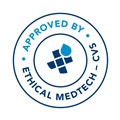
Biography
Biography: Farzin Sarkarat
Abstract
Three-dimensional virtual surgical planning using computer-aided design and manufacturing (CAD/CAM) has gained popularity in planning cosmetic surgery because of its ability to guide complex geometric planning in tree-dimensional space and save time in the operating room. The purpose of our study was to review a new concept using CAD/CAM in facial cosmetic surgery. Recent advances in the fields include facial analysis and planning in facial surface and bone graft or implant volume analysis in cosmetic surgery. In recent years, the patients who are candidate for facial cosmetic surgery want to have an image of the post-surgical face form. Furthermore, the symmetry of areas like cheeks is also of great importance for both patient and surgeon. In the present article, we applied a new method using CAD/CAM for primary scanning of soft and hard tissues in patients and their processing through computer in order to analyze the current and the ideal post-surgical face forms. Thereafter, the required molds for the operation of various facial areas were made using PLA. These molds are so designed that using them, all phases of the surgical procedure can ideally be proceeded according to analysis and this will lead ultimately to the facial symmetry and satisfaction of patient and surgeon. The CAD/CAM planning lasted one session preoperative. Positioning guides were used, translating to significant precision as well as the final position. Qualitatively, the positioning guides were easy to use and improved operating room efficiency. To conclude, CAD/CAM virtual surgical planning is effective in the performance of cosmetic surgery. More work is needed to more clearly define surgical indications for this new technology. Further out come studies are still needed to show the superiority of these methods to contemporary techniques.

